How to Make Tahini
Tahini is a deliciously nutty paste made from toasted, hulled sesame seeds. Homemade tahini is not only tastier but also more affordable compared to shop-bought tahini. And, bonus, tahini is super easy to make!
I fell in love with Middle Eastern food not long after I bought my first Yotam Ottolenghi cookbook. And tahini is such an essential part of the cuisine. You can use it for quick and easy dressings or add it to baked goods and sweet treats.
But the quality Israeli tahini Ottolenghi recommends can be expensive. And the rate at which I move through a jar of the stuff is scary. This recipe post shows you how to make tahini at home.
You can use a high-powered blender or food processor. For small batches, you can even use a mortar and pestle. Start making (and using) tahini at home today. You won’t look back!
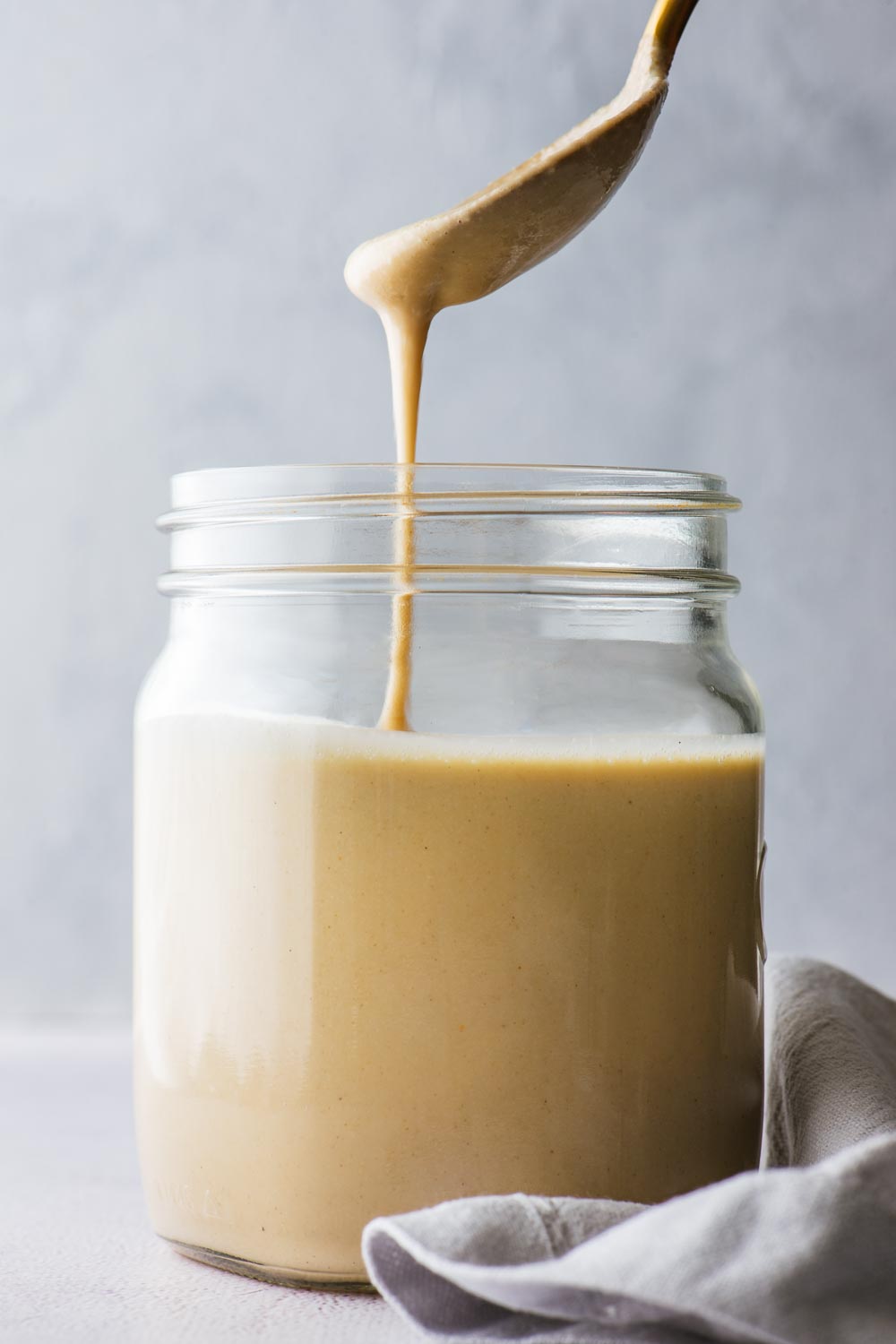
What is tahini?
Tahini (also called tahina or tahin) is a Middle Eastern condiment made from toasted, hulled sesame seeds. The seeds are ground into a smooth, rich sesame paste. It is popular in Levantine, Eastern Mediterranean and Maghreb cuisine. All the good stuff.
With a deliciously nutty flavour, tahina almost tastes like mild peanut butter with an earthy taste. However, it can sometimes lean towards bitter, especially if you go for the cheapest option.
This is why making tahini at home is so rewarding. Use good quality sesame seeds and you will have a rich, earthy and deliciously nutty sesame past at a fraction of the cost.
Related Post: Learn more about the difference between sesame paste and tahini.
Homemade tahini ingredients
To make tahini at home, you only need one ingredient, hulled sesame seeds. You can also add oil for a more pourable, smoother sauce. Though I often omit the oil in favour of 100% sesame tahini.
To make the sesame paste you will need:
- Hulled sesame seeds: Unhulled sesame seeds still contain the fibrous husk (or hull). With hulled sesame seeds, the husk is removed during manufacturing. Therefore, hulled sesame seeds yield smoother tahini.
- Oil (optional): I prefer a mild extra virgin olive oil. But you can use any neutral-tasting oil. If you add sesame oil, be sure that it is not toasted sesame oil. Though delicious, the taste is strong and not suitable for tahini.
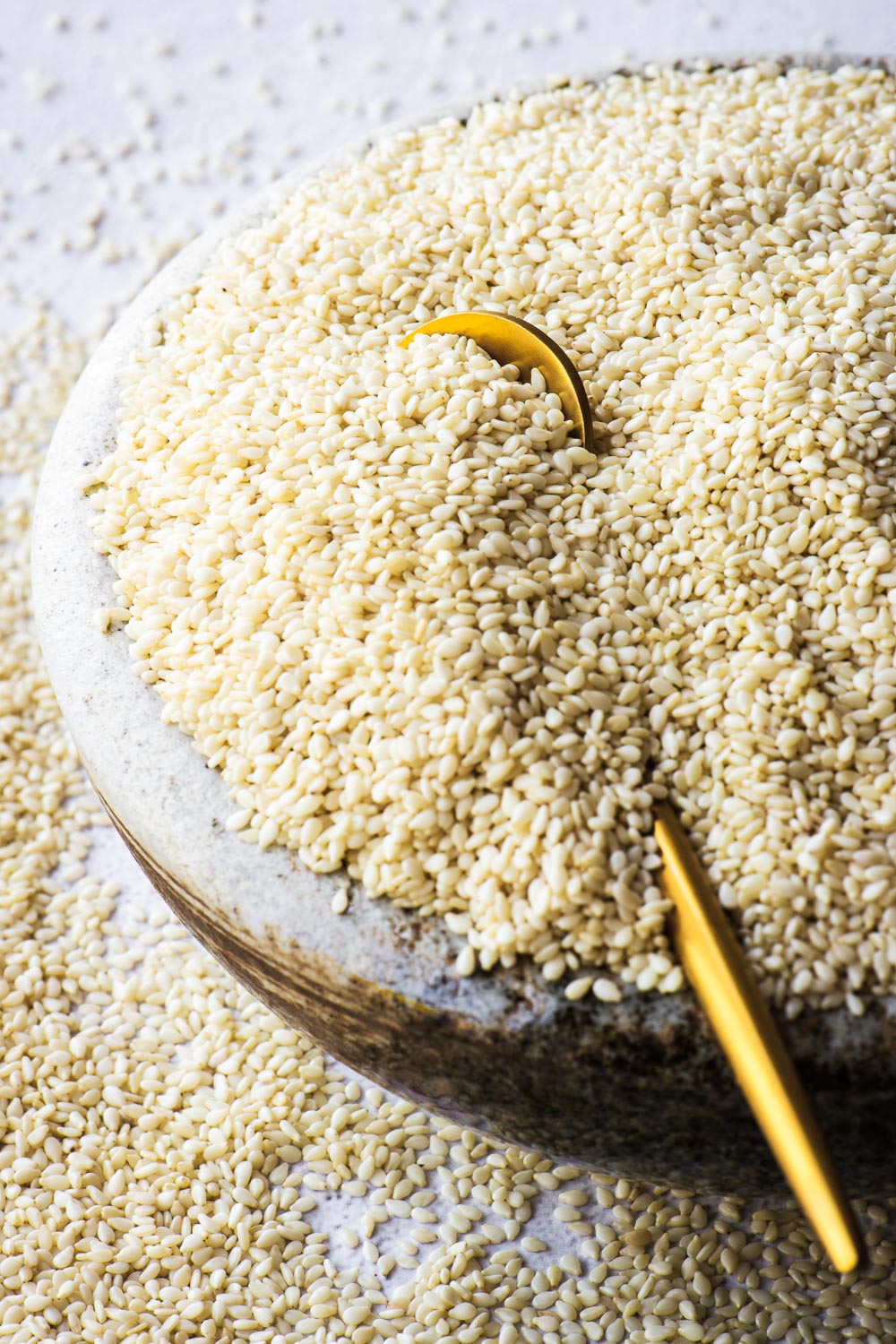
How to make tahini at home
Making sesame paste at home is incredibly simple. Simply toast hulled sesame seeds before blending or grinding them into a paste.
You can even skip the toasting to make raw tahini if you prefer. But toasting the seeds boosts the nutty flavour, so I don’t recommend skipping the step.
There are two steps to make homemade tahini:
- Step 1: Toast hulled sesame seeds.
- Step 2: Blitz or grind the sesame seeds into a paste.
Step 1: Toast the sesame seeds
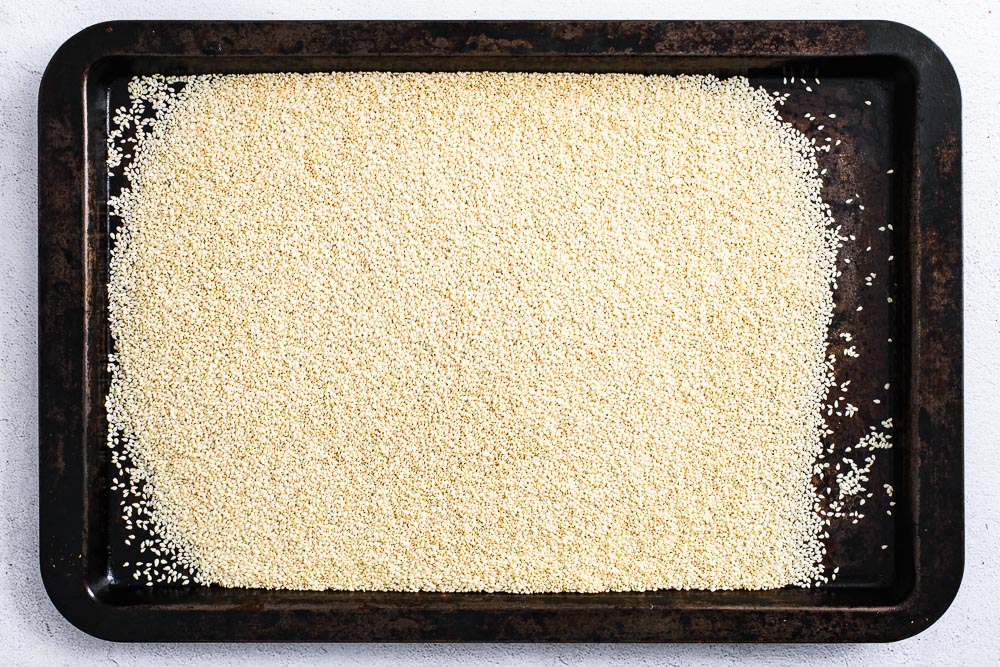
You can toast sesame seeds in the oven or on the stove. The stovetop method is ideal for small batches (less than ½ cup of sesame seeds). And the oven-toasting method works best for larger quantities.
When I’m oven-toasting sesame seeds for tahini, I like to toast an extra cup of seeds while I’m at it. Toasted nuts and seeds are delicious sprinkled on noodles or salads. You can store toasted sesame seeds in a sealed container for up to 6 months.
Stovetop method
This method works best for small quantities – less than ½ cup of sesame seeds to toast.
Place the sesame seeds in a dry skillet over medium heat. Toast for about 3 minutes, constantly shaking the pan and stirring to avoid burning. You want the sesame seeds to be golden and not dark, so pay close attention to keep them from burning.
Remove the seeds from the pan and place them in a bowl to cool before using or storing them for future use.
Oven method
This method is best for large quantities – more than a cup of sesame seeds.
Preheat the oven to 350 °F (180 °C) – or lower if you use a fan oven.
Put the sesame seeds on a rimmed baking tray/sheet pan and spread it in a thin, even layer. Place the tray on the middle rack in the oven and toast for 8 to 10 minutes.
Remove the tray from the oven to check on the progress a few times, giving the pan a shake whenever you do.
Step 2: Blitz the toasted sesame seeds into a paste
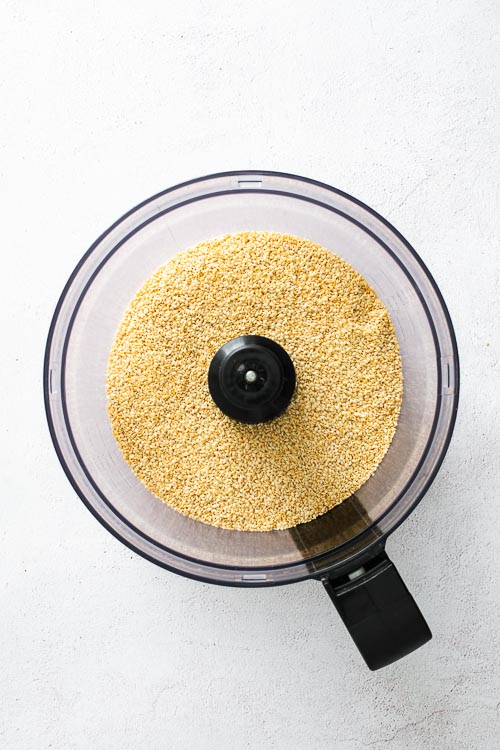
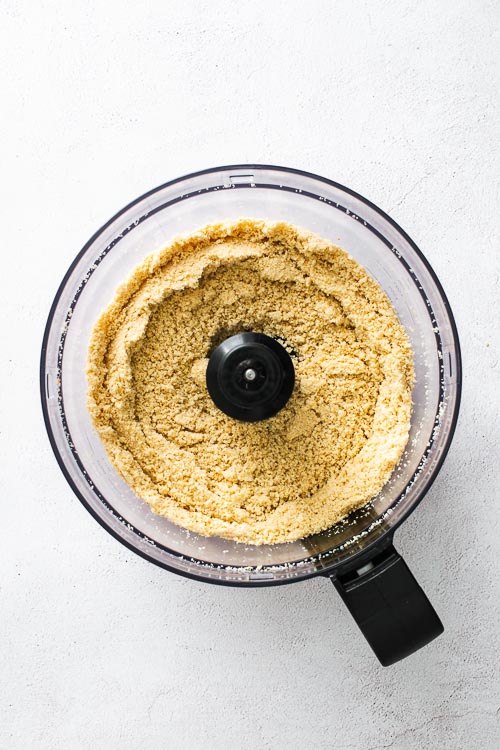
Traditionally, tahini is ground in stone mills. But lucky for us, modern kitchen equipment also does a fine job.
For a large batch of tahini – as in the recipe card below – you need a high-powered blender or strong food processor to get the creamiest tahini. The stronger your blender, the less oil you will need to create a smooth tahini.
In a food processor
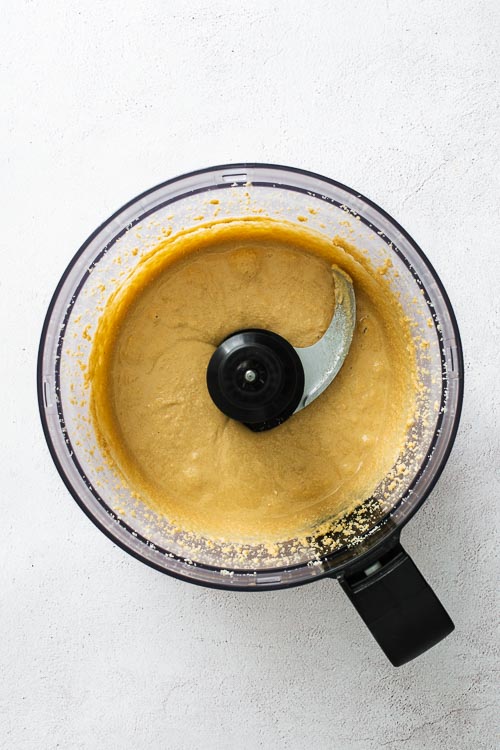
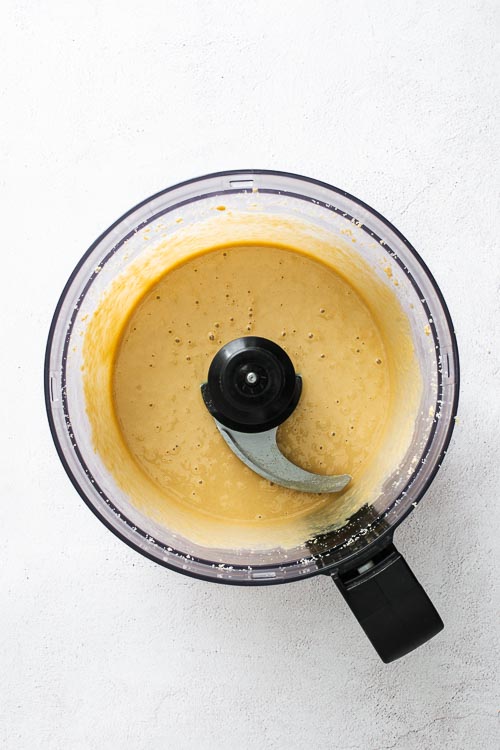
Transfer the toasted sesame seeds to the bowl of your food processor and blitz on high for 4 minutes – I use an old 1000 Watt food processor. At first, the sesame seeds will resemble coarse sand. They will then come together to form a rough paste that eventually turns smoother and runnier.
With the motor running, drizzle the olive oil (if using) in a stream and process for another 2 minutes, stopping to scrape down the sides and bottom of the bowl as needed.
Add more olive oil if you want thinner and smoother tahini. It is a matter of personal preference and will also depend on the strength of your food processor. I add as little as possible, most often omitting the oil entirely and blitzing for a few minutes extra until I am satisfied with the texture.
In a high-powered blender
You can also make tahin in a blender. But you will need a high-powered blender – at least 1000 Watts, like a Vitamix – to get it smooth and creamy.
Simply add the sesame seeds to your blender and keep blending. Once coarse paste forms, add olive oil – one tablespoon at a time. Keep blending until you reach your desired consistency.
In a mortar and pestle
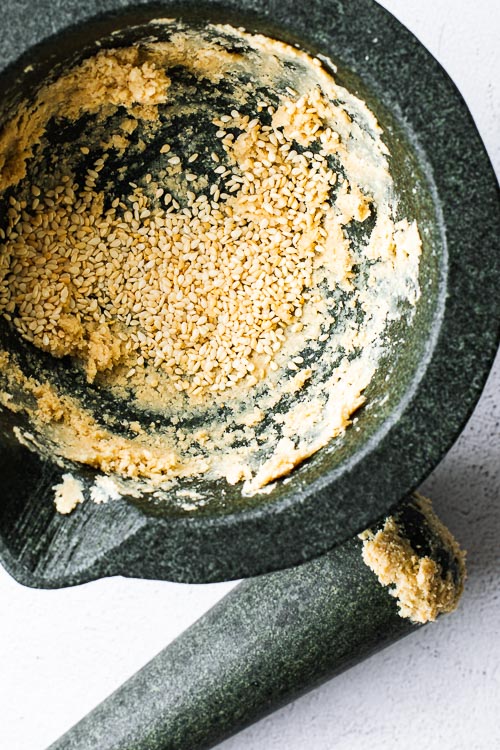
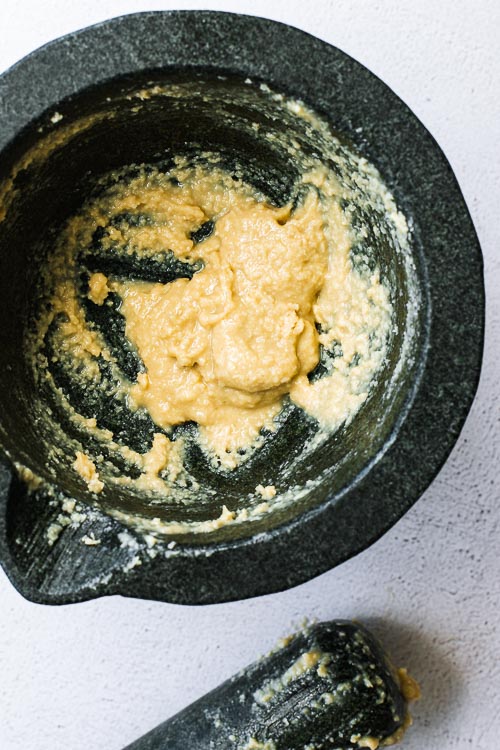
This method is not for the faint-hearted (or rather not for the weak-in-arm). But there is a trick that will save you some heartache (and armache). Start small!
Start with only 2 tablespoons of toasted sesame seeds in the mortar and grind with a pestle until the popping stops and you have a rough paste. Add another tablespoon or two and grind until almost smooth. Keep going in this fashion until you have enough paste.
Add olive oil, 1 tablespoon at a time, and keep grinding until you have the right consistency. It won’t be as smooth as the food processor version.
This is great when you run out of tahini and quickly need a small amount of tahini. But it is definitely not recommended for a large batch.
Just remember, don’t try to add half a cup of sesame seeds from the start. Trust me – and the sad little bowl of sesame mush in my fridge.
Frequently asked questions
How long does homemade tahini stay fresh?
Sesame seeds are naturally high in oil which means tahini can go rancid – characterised by an off or sour taste. But tahini doesn’t go rancid quickly when sealed and stored in the fridge. Simply stir to mix if it separates. Keep refrigerated for a few months.
Can I freeze tahini?
Yes, you can freeze tahini! Make a large batch of tahini and freeze it in smaller portions, moving to the fridge as you finish the last. This will extend the life of your tahina before the oil goes rancid.
How do I make my homemade tahini smoother?
There are two ways to achieve the smoothest homemade tahini. One option is to use a really strong blender, like a Vitamix. The second option is to use whatever tool you have, but add more olive oil (or another good quality oil) to reach a smoother paste.
If your blender is not strong enough, you need to add oil to the tahini for a smoother result. The tahini pictured below has no added oil.
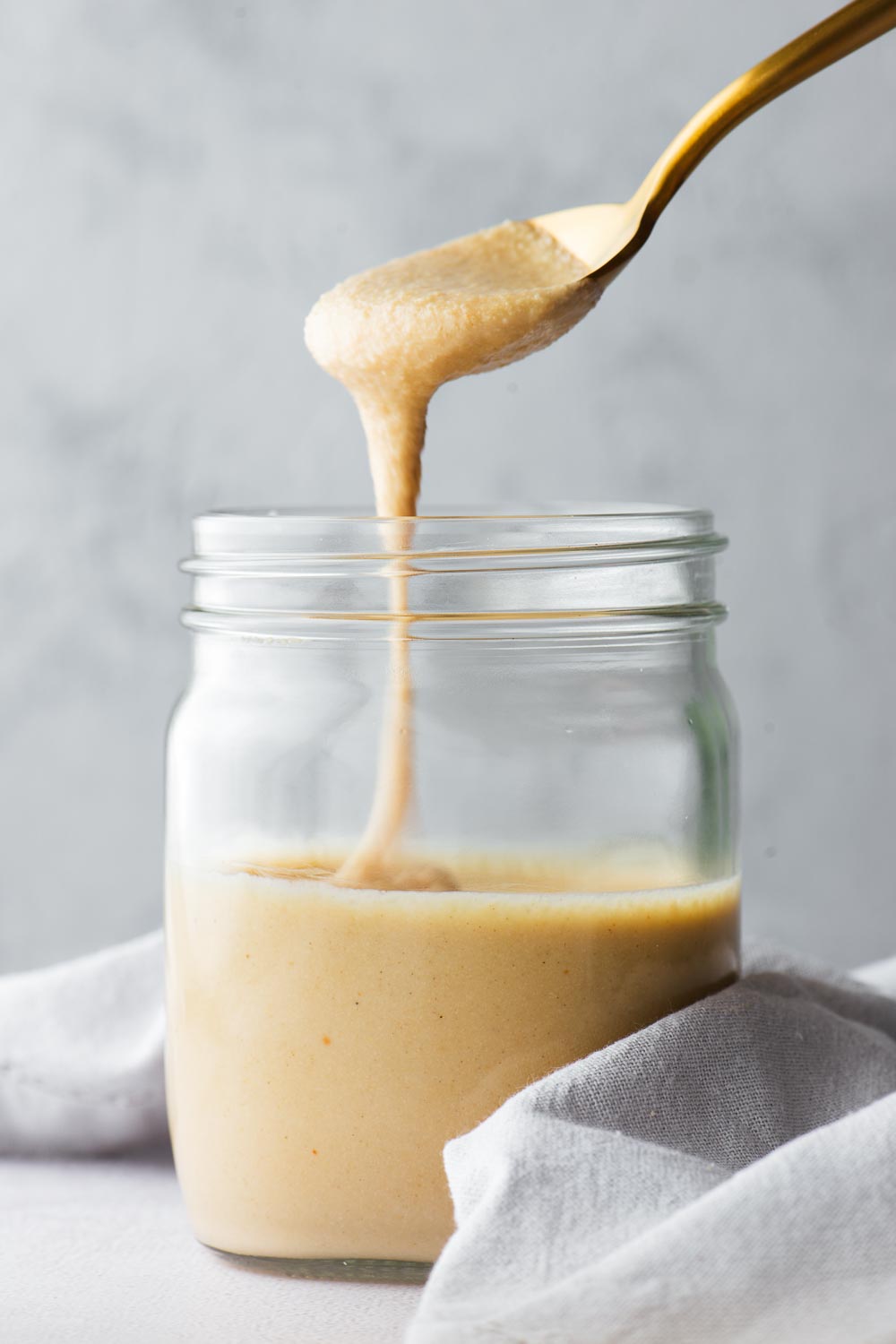
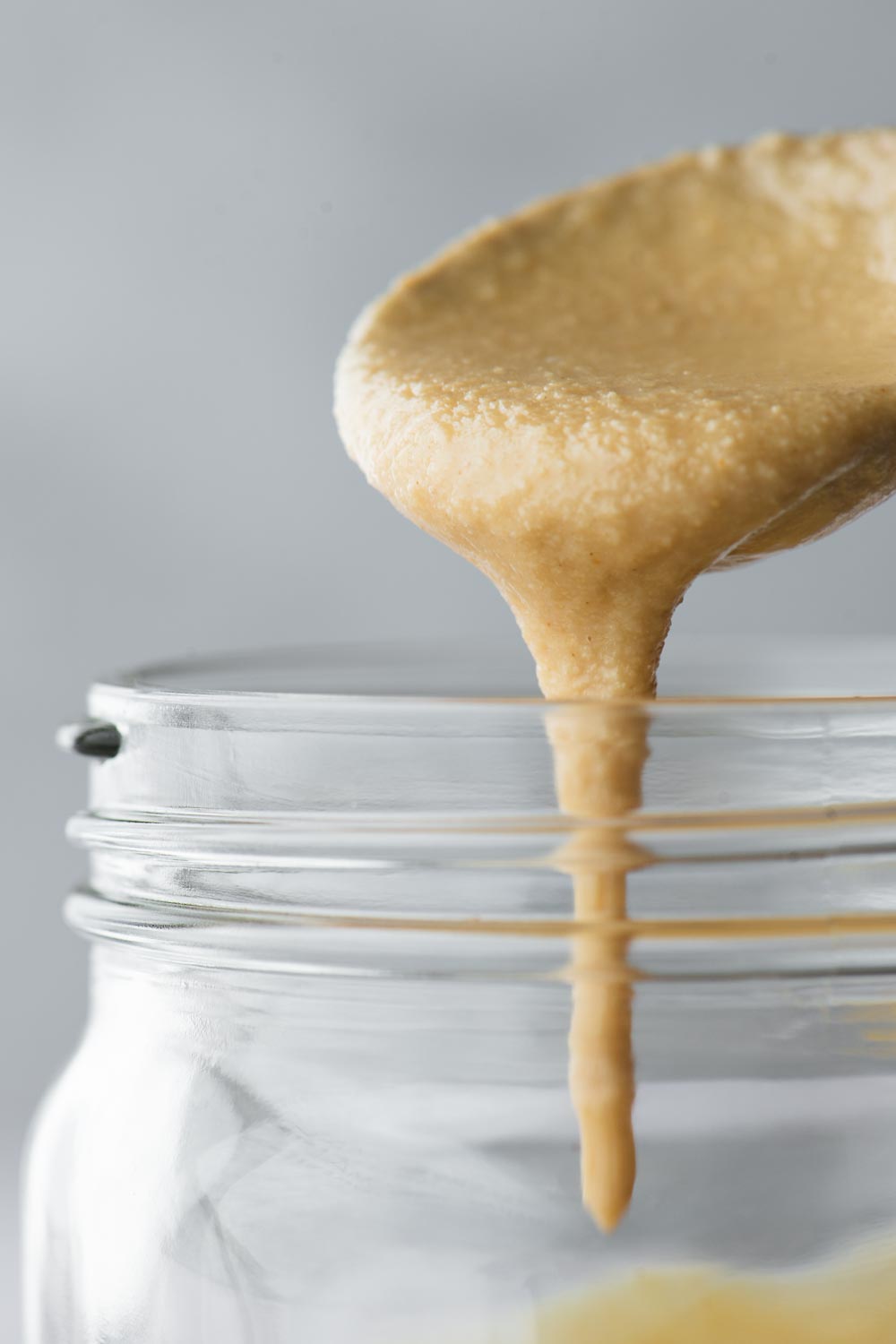
Should I add salt to homemade tahini?
This is also a matter of personal preference. But I never add salt to tahini. Sure, it tastes better lightly salted – like any other nut butter – but you lose the freedom of adjusting salt depending on the use case.
Shop-bought Israeli tahini also does not have salt, so most recipes will be tested with unsalted tahini. So, unless you plan on making sesame paste purely for snacking – which is a thing – don’t add salt or sweetener.
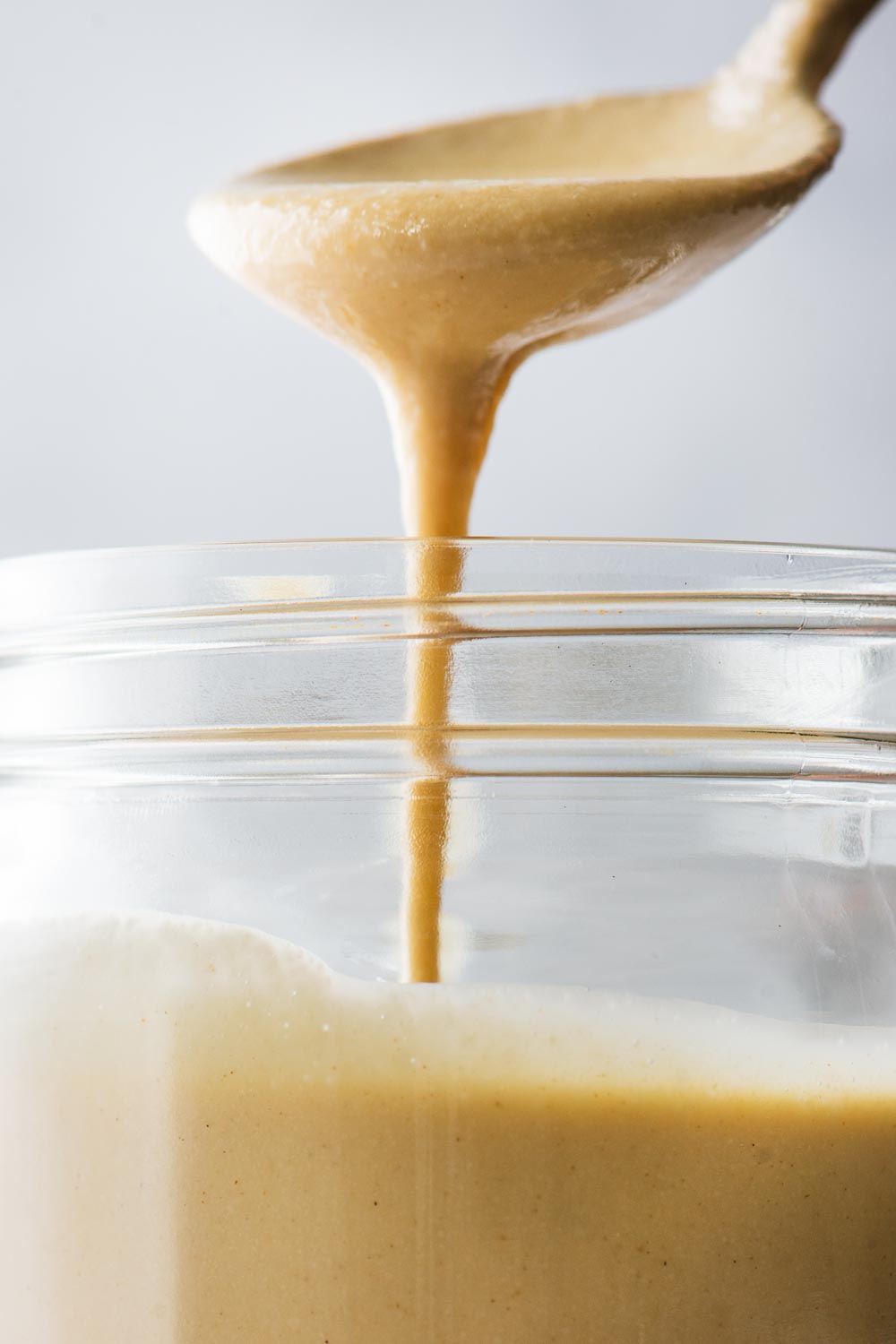
How to use tahini
Tahini in baking
You can use tahina in baking as you would peanut butter.
- Try a tahini cookie recipe – it tastes like halva and is incredibly moreish.
- Stir it through salted caramel for a delicious tahini caramel.
- Or make the Turkish tahin and molasses dessert spread (Tahin Pekmez) by mixing equal amounts of grape molasses and tahini. I also love using date syrup, even though it is not traditional. Tahin Pekmez is like an instant fruity tahini caramel. Generously spread on toast, spoon over ice cream, or add it to your morning granola.
- Drizzle tahina (or tahini caramel) over toasted banana bread like Yotam Ottolenghi does in his recipe for “Grilled Banana Bread with Tahini and Honeycomb” from Plenty More.
Tahini dressings, sauces and dips
One of the most common ways to use tahini is in dressings, sauces and dips.
- Hummus: This Middle Eastern dip needs no introduction. Try this lemony hummus recipe (without garlic) for the velvety smooth hummus with loads of tahini.
- Maple tahini salad dressing: This sweet and tangy maple tahini salad dressing is vegan, dairy-free, oil-free and gluten-free. It is delicious drizzled over any salad or grain bowl. But it is especially good in this kale salad with tahini dressing.
- Tahini lemon sauce: This easy lemon tahini sauce is the ultimate falafel sauce. But you can drizzle the creamy tahini sauce over salads or stews. Try it on this dish of white beans in roasted red pepper sauce, this Israeli-style tahini salad, or with shawarma roast cauliflower.
- Tahini yoghurt sauce: Simply stir together 2 tablespoons tahini with a quarter cup of yoghurt and a pinch of salt.
- Tahini herb dressing: Blitz fresh green herbs with tahini, lemon juice, green chilli and salt for a delicious green tahini sauce. Serve it as a dip or salad dressing, like in this bulgur wheat salad with tahini herb dressing.
- Tahini and bean dip: Hummus may need no introduction, but you can also make delicious tahini and bean dips using jarred white beans. Even better, blitz your leftover beans into white bean hummus with tahini.
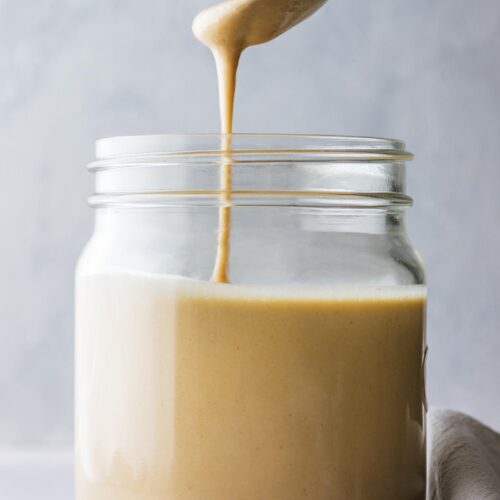
Equipment
- Food processor – or high-powered blender or mortar and pestle.
Ingredients
- 3 cups hulled sesame seeds
- 3 tablespoons olive oil (optional)
Instructions
- Preheat the oven to 350 °F – or lower if you use a fan oven.
- Put the sesame seeds on a rimmed baking tray/sheet pan and spread it in a thin, even layer. Place the tray on the middle rack in the oven and toast for 8 to 10 minutes. Remove the tray from the oven to check on the progress a few times, giving the seeds a stir and a shake whenever you do.
- Transfer the toasted sesame seeds to the bowl of your food processor (or high-powered blender) and blitz on high for 5 minutes – or until the paste is smooth. At first, the sesame seeds will resemble sand. They will then come together to form a coarse paste that eventually turns smoother.
- With the motor running, drizzle the olive oil (if using) in a stream and process for another 3 minutes, stopping to scrape down the sides and bottom of the bowl as needed. Add more olive oil if you want thinner and smoother tahini. It is a matter of personal preference. I try to add as little as possible to the sesame seeds, often omitting the oil entirely.
- Have patience and keep blending until your tahini is smooth. Once you are happy with the texture and consistency, transfer it to a clean glass jar, seal and transfer to the fridge. It will last for a few months. Simply give it a good stir if it starts to separate. You can also freeze tahini batches and defrost it as needed.
Notes
- How long your sesame seeds will take to roast depends on your oven temperature, oven setting, and the size of your baking tray. The more space between seeds on the tray, the quicker they toast. So it is best to check regularly instead of relying only on time. They can go from raw to burnt in the blink of an eye. You want to remove the sesame seeds from the oven when they are just golden. See stovetop instructions for toasting sesame seeds if you want to make a small batch.
- I use a food processor (1000 Watts) because this is what I have. You can also use a high-powered blender, like a Vitamix. For smooth and creamy tahini, the more powerful, the better. Or see how to make tahini in a mortar and pestle if you need to make a smaller batch by hand.
